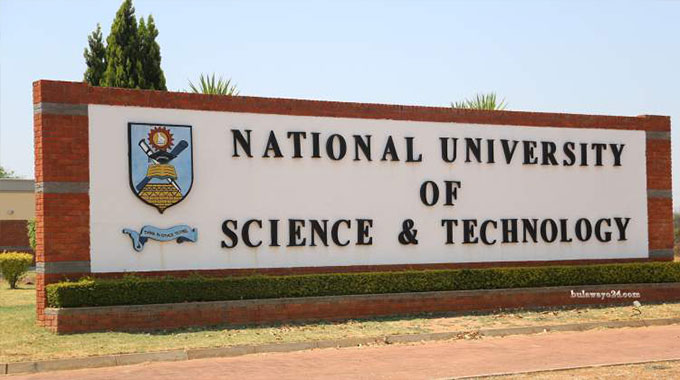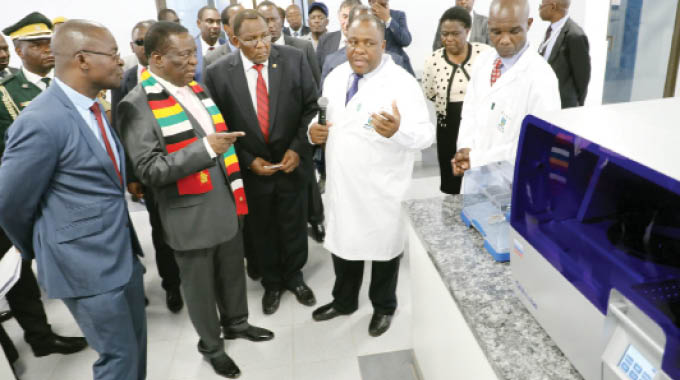
The Sunday News

Robin Muchetu, Senior Reporter
SPECULATION as to who impregnated the nine-year-old Tsholotsho girl can only be put to rest through deoxyribonucleic acid (DNA) and the National University of Science and Technology (Nust) has offered itself to do the tests for free.

NUST
Through its Applied Genetic Testing Centre, the university says it stands ready to provide the answers through DNA testing, which can be done for various applications like human identification, forensic science, pathogen identification as well as livestock and crops. In an interview, director of the centre Mr Zephania Dlamini said it was part of their mandate to assist communities that were facing such crises.
“As a centre of excellence in DNA testing in Zimbabwe we do have a responsibility to help the community that we are working in. We would be glad to help the law enforcement agents to solve this case. We will do this DNA testing as soon as the child is born, we will liaise with doctors so that we get the DNA samples from the suspect, the nine-year-old and the offspring that she is going to give birth to. We will gladly conduct the DNA test as our contribution to society without charging them,” said Mr Dlamini.
He said the matter was before the courts and they were waiting for the court to decide whether a DNA test was required, adding that the results would be given to the court officials.
“All life forms have genetic materials in the form of DNA. This DNA is inherited by individuals from their parents and human beings and animals usually have two pairs of chromosomes, half a pair comes from the mother and the other half from the father.

file photo – Nust DNA centre director Mr Zephania Dlamini stresses a point to the Nust chancellor President Mnangagwa during a tour of the university’s innovation hub last Friday. Looking on (from left) are Professor Amon Murwira, university council chairperson Mr Alvord Mabhena, and Minister of State for Bulawayo Provincial Affairs Cde Judith Ncube
With that basically there are no two individuals that have the same DNA except identical twins who have exactly the same DNA. With the Tsholotsho case where we hear a nine-year-old is pregnant and the suspect is the father of this child, it is possible to distinguish the DNA of this man in this child who is supposed to be his grandchild and is now allegedly going to be the father,” he said.
He said half of the DNA for the nine-year-old girl was from her father.
“You must recognise that he gave her only half and the other half is from the mother. So, there are some markers that are found within the father that will also be found in the nine-year-old. The child to be born will have DNA markers that will be clear from the mother, we will analyse that DNA and then analyse from the suspected father and it will be possible to tell if he is indeed the perpetrator of the rape.
He can be excluded if we do not find his DNA in the child to be born. The importance of this is that we have to test the mother, new-born and the alleged perpetrator and it must match 100 percent with the suspect. It’s a simple case,” he said.
However, Mr Dlamini said not being the father of the to-be-born child would not necessarily exonerate him from having raped her.
“If a person is charged with rape we do the tests and if they come out negative with no DNA match (with the newly born child), it does not mean they did not rape. It may mean they did not impregnate the victim, but it does not necessarily provide evidence that they did not rape. DNA cannot prove in that case, it can only exonerate one from being the father but not the rape case.
That one will remain the victim’s word against the perpetrator,” he emphasised.
Mr Dlamini, however, said there are some challenges that come with incest where a child was impregnated by his parent.
“In applied genetics, we call it breeding. For a healthy society we need people not to mate within families because if there are genetic defects, they may be lying dormant and we are not seeing them. But when we make these people mate/reproduce among themselves those defects tend to come up and manifest themselves a lot,” said Mr Dlamini.
He said according to classical genetics cases, the British Royal family is inbred as they married cousins and there was a defect that occurred in the royal family and that defect, haemophilia, the inability for blood to clot. A lot of Queen Victoria’s male descendants have that defect; it is running in the family.
“If people who are closely related have children, you tend to see these defects coming up at a much higher frequency than if people were marrying from distant families. There are a lot of other defects and the most common one is albinism, if people who have the albinism DNA and are closely related and have children, the probability of albinism increases,” he added.
Mr Dlamini said if there were genetic defects present, they were likely to manifest in the offspring. Inbreeding, he said, was not encouraged even in animals. He said in the absence of DNA, the case could only be one of speculation. @NyembeziMu



